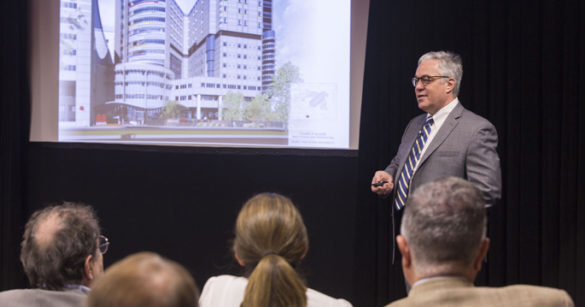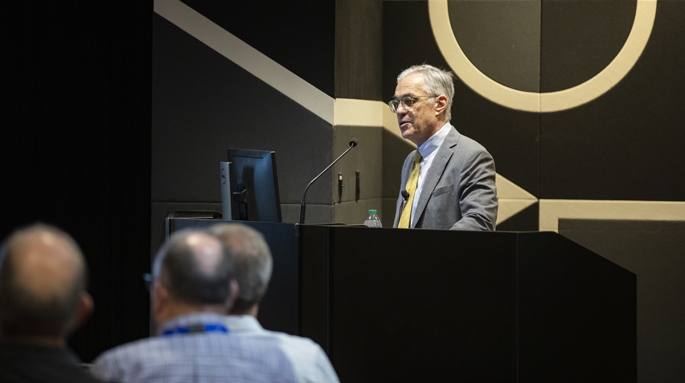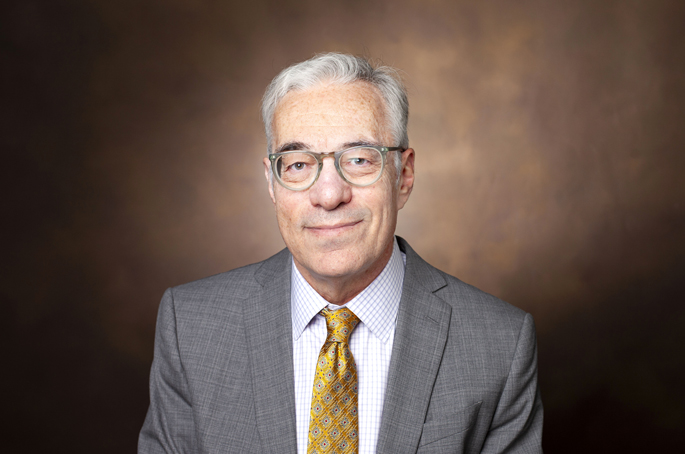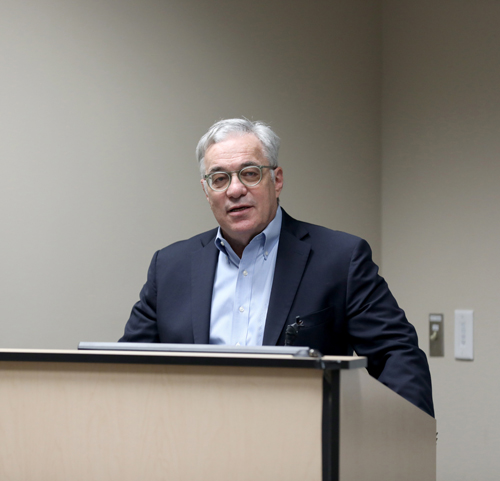
Steven Webber, MBChB, MRCP, delivered the annual State of the Department of Pediatrics address on Tuesday, with growth and quality improvement serving as recurring themes along with a focus on the department’s four mission areas — discovery, clinical care, education and advocacy, service and community partnerships.
Webber, chair of the Department of Pediatrics and Pediatrician-in-chief of Monroe Carell Jr. Children’s Hospital at Vanderbilt, delivered his annual update to a crowd of faculty, staff and trainees inside the First Tennessee Conference Center and Theater at Children’s Hospital.
During much of his address, people remained a central theme, as he celebrated that every person — staff, trainees and faculty — is key to the department’s success.
“I want to take the opportunity to celebrate the wonderful people that work so hard to make our department a great success,” said Webber, the James C. Overall Professor. “I wish to review our major achievements over the last year and to discuss some of the work already underway for this coming year. Certainly, we will have many new opportunities, but also new challenges. However, we have the best people to deal with these and to turn challenges into new opportunities.”
In the area of discovery, the department continues to achieve high rankings for NIH grant funding, this year earning the No. 4 spot in pediatrics on the annual list from Blue Ridge Institute for Medical Research. Also, the department in the past year had total research grant and contract expenditures in excess of $52 million from all federal and non-federal sources. Webber took a moment to highlight some of the new and ongoing research projects and the impact that they will have on the lives of children.
The discovery and education missions go hand-in-hand, he pointed out, with the department heavily focused on developing a strong pipeline of future pediatric physician scientists through recruitment, mentorship and retention of the most talented students, residents, fellows and junior faculty.
Education and training are part of that focus to ready the next generation of physicians. Presently, there are 111 residents and 75 post-doctoral fellows training in general pediatrics as well as subspecialty care. The residency program has a big draw, and saw 1,415 applications this year, bringing in residents from across the nation.
The department continues to see growth in clinical volumes, with ever more patients seeking outpatient services for subspecialty care as well as general pediatric care across multiple locations throughout the state. From fiscal year 2016 to fiscal year 2017, there was a 7.2 percent growth in outpatient visits. The department’s off-site clinics allow patients to be seen closer to home.
“We need to do this because this is where patients want to be seen,” Webber said.
There are plans to continue to grow outreach services as the pediatric enterprise transforms from a hospital to a statewide network of care for children.
He emphasized the importance of quality improvement as health care transitions to value-based care. “The focus on quality is the right thing for patients and for our health system.”
He summarized what each division is doing for quality improvement initiatives.
A portion of the address was spent on the coming year, which includes ongoing construction on the expansion, with a slated build out of the ninth and 10th floors of the hospital to be completed in mid-2019.
Borrowing from a quote often attributed to Albert Einstein, among other people, Webber noted his highlights were just a smattering of the tremendous work being done in the department.
“Not everything that can be counted counts. Not everything that counts can be counted,” he said, while emphasizing that each and every member of the department counts and is critical to its success.















